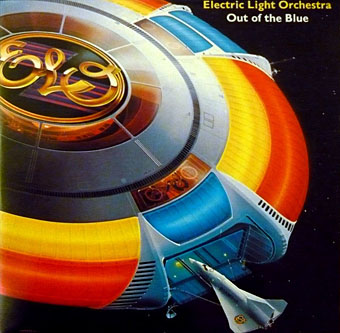
Out Of The Blue (1977) by Electric Light Orchestra.
Many different labels may be attached to the 1970s but it was definitely the science-fiction decade as much as anything else, a time when the use of SF imagery became a widespread trend, often superficially applied but there all the same. You see this in the music packaging of the period, and not only in the obvious enclaves of progressive rock. Here’s Motown Chartbusters Vol. 6 (1971) with a spaceship cover by Roger Dean; here’s Herbie Hancock on the cover of Thrust (1974) piloting his keyboard-driven craft over Machu Picchu while an alarmingly swollen Moon seems ready to crash into the Earth.
Out Of The Blue gatefold interior.
The exploitation of SF imagery on the covers of funk, soul and disco albums was much more widespread than the jazz world, and lasted long enough to join up with the emergence of synth-pop and electro in the early 1980s. The meticulous airbrush paintings of Shusei Nagaoka dominate this era and idiom, thanks in part to his covers for two of the biggest albums of 1977: Out Of The Blue by Electric Light Orchestra, and All ’n All by Earth, Wind & Fire.

All ’n All (1977) by Earth, Wind & Fire.
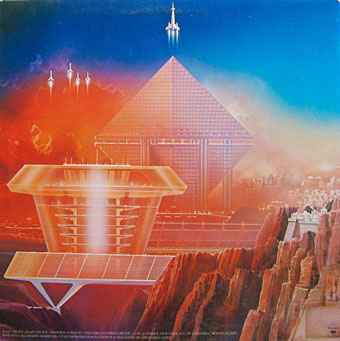
The latter doesn’t look especially science-fictional until you flip it over and its Egyptian scene morphs into a futuristic cityscape with a fleet of rockets heading for the stars. (That pyramidal building is based on one of Paolo Soleri’s hexahedron megastructures.) Many of the albums that followed this pair were jumping on the post-Star Wars/Close Encounters SF bandwagon but there were other reasons for funk and disco artists to embrace the Space Age, as Jon Savage has noted: “Disco’s stateless, relentlessly technological focus lent itself to space/alien fantasies which are a very good way for minorities to express and deflect alienation: if you’re weird, it’s because you’re from another world. And this world cannot touch you.”
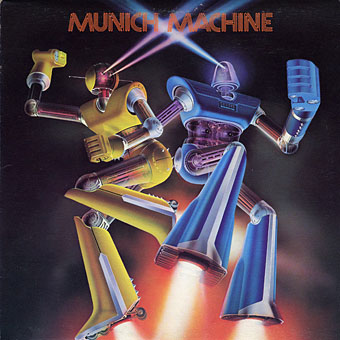
Munich Machine (1977) by Munich Machine. (A Giorgio Moroder production.)
Nagaoka was in demand for his cover art even before hitching a ride to the top of the album charts so what you see here is a limited selection. As usual, there’s more to be seen at Discogs although I often wish they’d allow larger image uploads. Future Life magazine ran a feature about Nagaoka in October 1978 which includes a brief interview with the artist together with some biographical details.
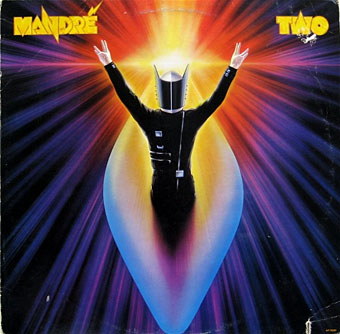
Mandré Two (1978) by Mandré.
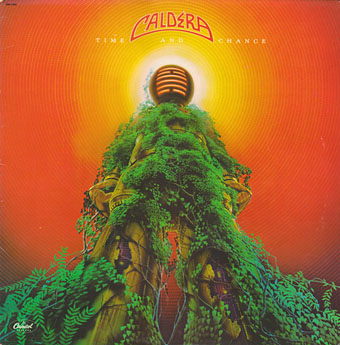
Time And Chance (1978) by Caldera.
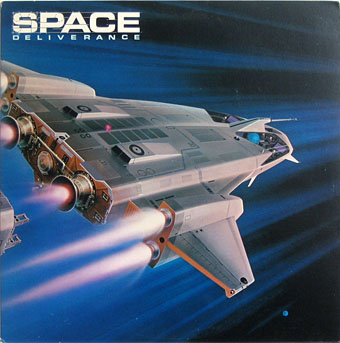
Deliverance (1978) by Space.
French disco band Space had a European chart hit with Magic Fly in 1977. Their second album, Deliverance, had a typical piece of Hipgnosis Surrealism for its cover art. The US release changed this to a Nagaoka spaceship.
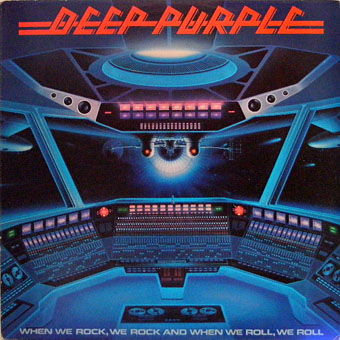
When We Rock, We Rock And When We Roll, We Roll (1978) by Deep Purple.
And speaking of spaceships, the closest Deep Purple ever came to space rock was on the song Space Truckin’ which is the first track on this compilation album, and whose presence may explain the otherwise unsuitable cover art.
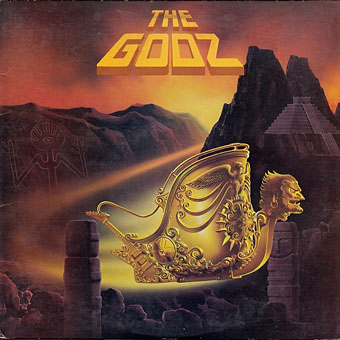
The Godz (1978) by The Godz.
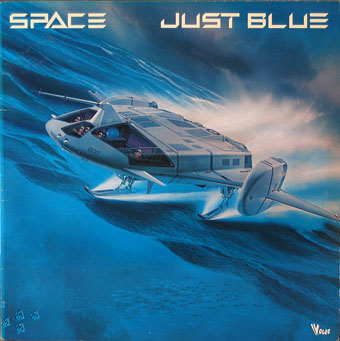
Just Blue (1978) by Space.
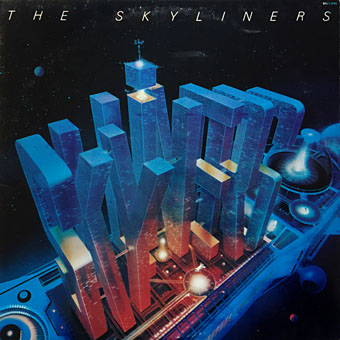
The Skyliners (1978) by The Skyliners.
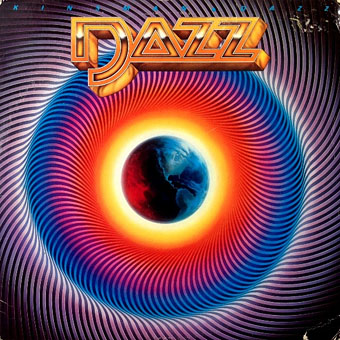
Dazz (1979) by Kinsman Dazz.
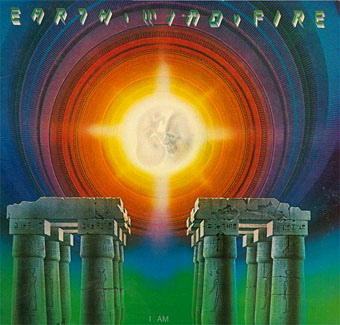
I Am (1979) by Earth, Wind And Fire.
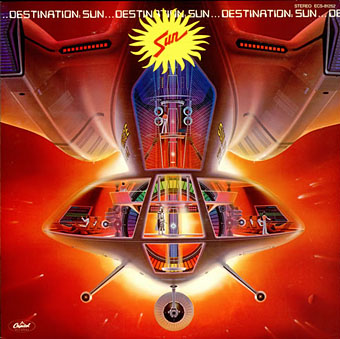
Destination: Sun (1979) by Sun.
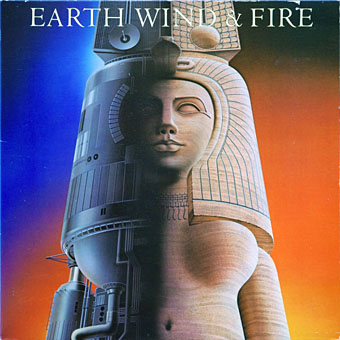
Raise (1981) by Earth, Wind & Fire.
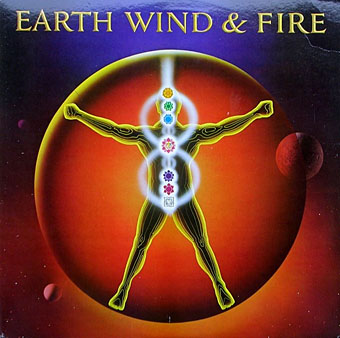
Powerlight (1983) by Earth, Wind & Fire.
Elsewhere on { feuilleton }
• The album covers archive
• The illustrators archive
Previously on { feuilleton }
• Do You Have The Force?

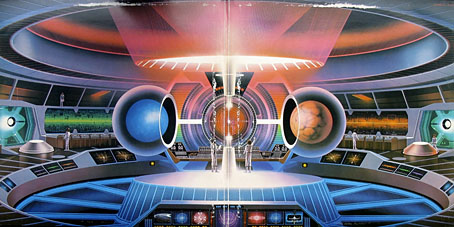
Thankfully, Discogs has adjusted its image upload restrictions a little. It used to be max 600 x 600 pixels, now it’s max 4MB in size – but as you can imagine, most older covers have not been updated with a larger version.
Nice entry. It looks like von Däniken and “Chariots of the Gods” was a thematic undertone that ran through some of these.
Marc: Thanks, that’s good to hear.
Jim: Yes, indeed, there’s a lot of tie-in with the crank books of the time (Cerrone even had a disco hit with a song called Supernature which may have been named after the not-so-cranky Lyall Watson book), and those books join up with science fiction on their covers, as noted here: http://www.johncoulthart.com/feuilleton/2021/10/11/crank-book-covers/
Oh, yes, thanks for the link, I hadn’t seen that post. I can’t help but feel a wave of nostalgia for some of those covers, as I was a teenager in the 1970’s and actually remember seeing some on the racks when they were new. It’s rather amusing that the “cranks” and the “de-bunkers” got the same style of packaging regardless of their intent.
I feel affection for those books as well. They were imaginative sparks even if their claims were unfounded.
I think most of the debunkers had sober covers in hardback, it was the paperback editions that packaged them to look like the crank titles. The latter would have sold much more so I suppose this was a rather cynical move on the part of the publishers.